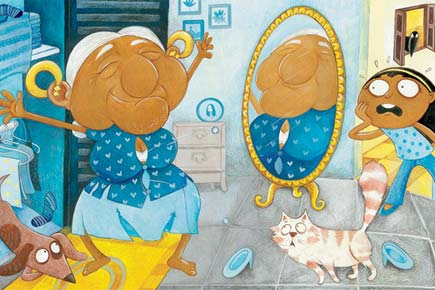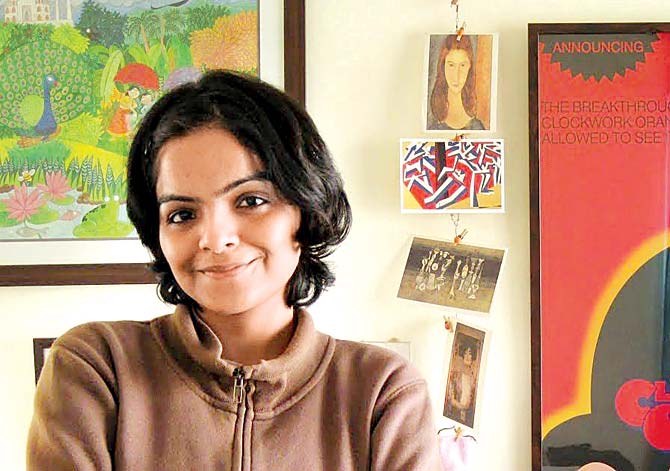Breaking ground in the children's storytelling format, writer-illustrator Priya Kuriyan hopes that her wordless title, Ammachi's Glasses, will pique young minds


The reader goes on a rollercoaster as Ammachi tries to locate her spectacles
ADVERTISEMENT
What led you to create a wordless storybook?
Truth is, Ammachi's Glasses began as a typical children's book. In the course of time though, while the book was still in the sketching stage, the editors at Tulika pointed out that perhaps the words were not really adding to the story and that the visuals could possibly stand on their own. I looked at the book afresh, and realised that their suggestion was a great one.

I think wordless picture books make children observe the artwork intently; aid them slow down and look around more carefully, as there are no words to tell them that the story on this page has ended. They can then interpret and retell the story in their own vocabulary. It allows them to spot things within the artwork that might be familiar to them, ask questions and have all sorts of conversations with their parents or whoever they might be reading it with. In many ways, they can be more thought-provoking than a picture book with words. Also, these books can be enjoyed by anyone regardless of how old they are or what language they are familiar with.
In your interactions with kids, did you find that they respond better to pictures than text?
It certainly piques their interest more. Reading a visual comes more instinctively to kids than reading text, so their response to a visual is almost immediate. Also, if the illustrations have enough detail for their eyes to wander around, they don't mind revisiting the same book over and over.
The characters and the plot, despite being set in Kerala, are relatable and instantly reach out to the reader.
I tried to give Ammachi, and the other characters, traits and emotions that are universally endearing. I tried to make them look like regular folks with different body types, skin colour, facial hair, moles and warts. Though the story is firmly set in Kerala, the primary conflict in the story of losing one's glasses is a fairly common one.
What kind of research was required, considering this was a unique storybook?
A lot of the book is based on memories of my own grandmother and a few other spunky women her age that I knew. All her life, I have only seen my grandmother wear the white garment [known as the chatta and mundu] that Ammachi in the book wears. So, in some ways, she was like a comic character in my eyes, you know, like Dennis the Menace, who never changes his clothes. While I was making artworks for the book, I had just moved to Kochi for a bit. So, being in the environment the book was set in really helped. For example, I could just look at the coconut scraper or the knives used in the kitchen back home to add that kind of detail in the book.
 Subscribe today by clicking the link and stay updated with the latest news!" Click here!
Subscribe today by clicking the link and stay updated with the latest news!" Click here!







